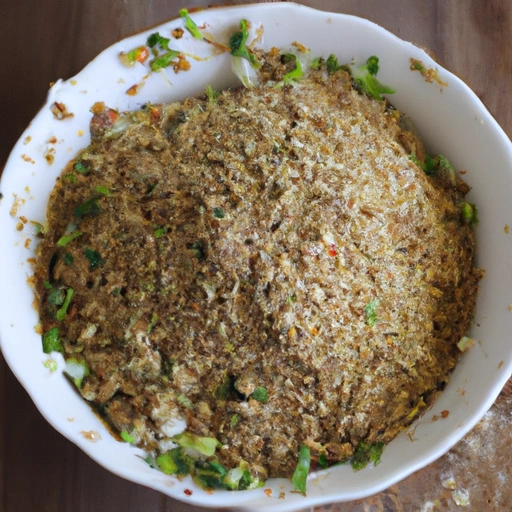Stuffing
Description

Common uses
Stuffing is most commonly used as a filling for poultry, such as turkey, chicken, or duck, especially during festive occasions like Thanksgiving, Christmas, and Easter. It is also used to stuff vegetables like bell peppers, mushrooms, and zucchini, or as an accompaniment to roasts and other meat dishes.
Nutritional value
Calories
The caloric content of stuffing can vary greatly depending on the ingredients used, but a typical serving can range from 300 to 500 calories.
Protein
Protein levels in stuffing may vary, especially if meat, nuts, or legumes are included in the recipe. On average, a serving can contain 3 to 5 grams of protein.
Fat
Fat content is also highly variable but can range from 5 to 15 grams per serving, largely depending on additions like butter, sausage, or nuts.
Carbohydrates
As stuffing is often bread-based, it is generally high in carbohydrates, with a serving providing anywhere from 20 to 30 grams.
Vitamins
Stuffing can provide an array of vitamins, particularly if it includes vegetables and herbs, which can contribute vitamins A, C, and various B vitamins.
Minerals
Minerals in stuffing can come from a variety of sources, such as vegetables, which provide potassium, iron, and magnesium.
Health benefits
When prepared with whole-grain bread, nuts, and a variety of vegetables, stuffing can offer dietary fiber, which supports digestion, and a range of nutrients beneficial for overall health. Herbs and spices can also contribute antioxidants.
Potential risks
The potential risks associated with stuffing primarily include high sodium content, especially in pre-packaged mixes, and high calories when made with large amounts of butter or meat. For individuals with gluten intolerance or celiac disease, traditional bread-based stuffing may pose a health risk.
Common recipes
Popular recipes include traditional turkey stuffing, cornbread stuffing, sausage stuffing, vegetarian stuffing with lentils or chickpeas, and fruit-based stuffings for a sweet-savory twist.
Cooking methods
Stuffing can be cooked inside the cavity of the meat or poultry, or baked separately in a dish. It can also be sautéed, steamed, or even cooked in a slow cooker.
Pairing with other ingredients
Stuffing pairs well with roasted meats, cranberry sauce, gravy, and vegetable side dishes. It can also complement vegan and vegetarian entrees.
Summary
Stuffing is a versatile and flavorful ingredient integral to many cuisines. It can be adapted to suit a variety of dietary preferences and is featured in an array of dishes, from the classic Thanksgiving turkey stuffing to inventive vegetarian options. While it is a source of comfort and tradition for many, its nutritional content and potential health implications should be considered when preparing and consuming stuffing-based dishes.